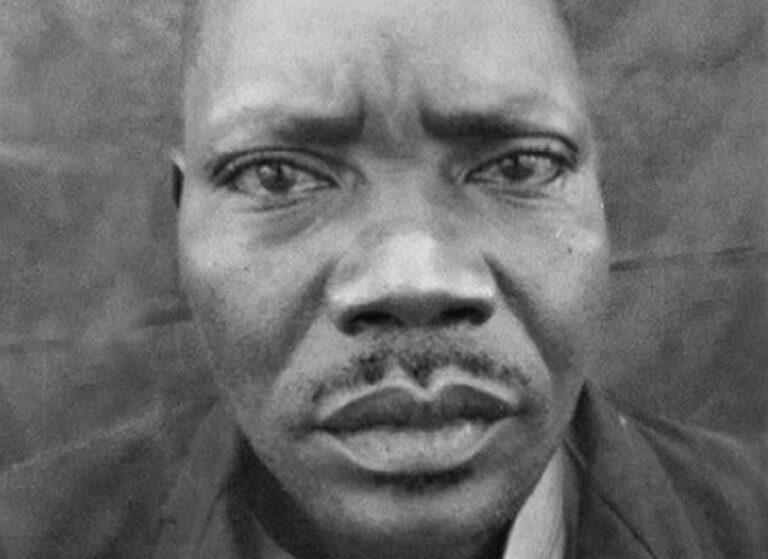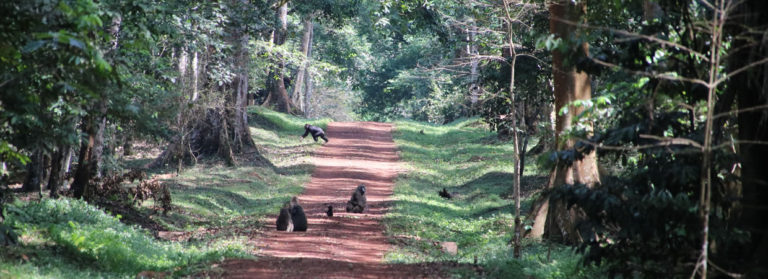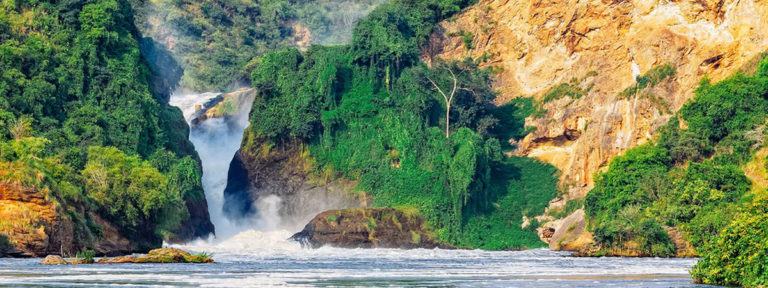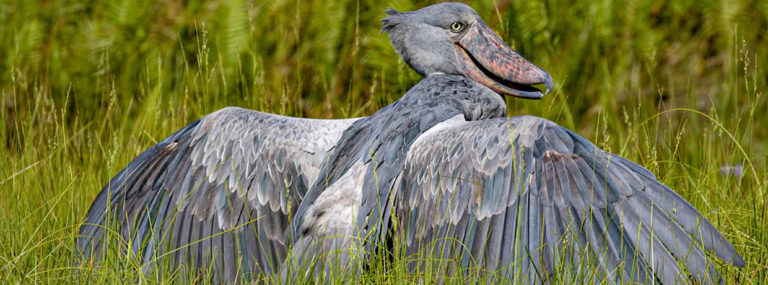A Guide to Murchison Falls National Park
A complete guide to exploring Murchison Falls National Park, the largest protected area in Uganda. This spectacular park is situated in North-western Uganda (on the Northern edge of the Albertine Rift Valley), and forms part of the Murchison Falls Conservation Area consisting of Karuma Falls Wildlife Reserve, the Bugungu Wildlife Reserve and this enormous park.
This independent travel guide covers from the Victoria Nile that stretch to the Karuma Bridge and Lake Albert to the collectively managed Bugungu and Karuma Wildlife Reserve as well as the Budongo Forest and Kaniyo Pabidi Ecotourism Site.
This guide is packed with travel information on what to do, where to go, things to see, maps & guides, where to stay, tips & advice. Here you will find all the information you need to plan a safari to Murchison Falls National Park and the neighboring areas. This guide features up-to-date information on attractions, hotels, restaurants, places where to go shopping, enjoy nightlife, travel tips and more.
Why Visit Murchison Falls National Park
Murchison Falls National Park is rated as not only one of the largest conservation areas but a prime destination for Uganda safaris. The Park is one of the oldest in Uganda and It was declared national park in 1952. The park has received many notable visitors including statesmen like Sir Winston Churchill who referred to it as the Kew Gardens in his book – My African Journey.
The park contains the spectacular Murchison Falls as well as a great variety of outstanding scenery, natural features and plant and animal communities.
This national park is the largest conservation area in Uganda and has abundant wildlife including the lions, leopards, giraffes, crocodiles as well as the hippos.
On this guide, you’ll find all you need to know to plan a safari to the Murchison Falls National Park with a lot of information to know about the park, how to get there, maps and details on what to see and do. You’re sure to discover something truly memorable.
Things to See in Murchison Falls National Park
The Murchison Falls Conservation Area is popular not only because of its extra-ordinary scenic beauty but also due to the unique wildlife. The national Park is well stocked with elephants, buffaloes, giraffes, chimpanzees, a variety of antelope, lions, leopards and the Nile itself hosts one of Africa’s densest hippo and crocodile populations, and a dazzling variety of water birds including the world’s most accessible wild population of the rare shoebill stork.Wildlife
Murchison Falls National Park is home to over 76 mammal species and more than 450 bird species. Among the large mammals found in the park are hippos, elephants, Rothschild’s giraffes, buffaloes, Uganda Kob, hartebeests, and lions. The park also has a variety of primates, including over 800 chimpanzees, olive baboons, black and white colobus monkeys, red-tailed monkeys, and blue monkeys.Birds
Murchison Falls National Park is a paradise with over 450 bird species for bird watchers. The Nile corridor is home to water birds, including the rare shoebill stork, as well as other species such as the Goliath heron, grey-crowned crane, giant kingfisher, and the African jacana. Other notable species include the Abyssinian ground hornbill, malachite kingfishers, and the black-billed barbet. The park is a great destination for both novice and experienced birders.4 Days Best of Murchison Falls Safari
Chimpanzee Tours, Nature Tours, Wildlife Safaris 0 review(s) 4 daysMurchison Falls
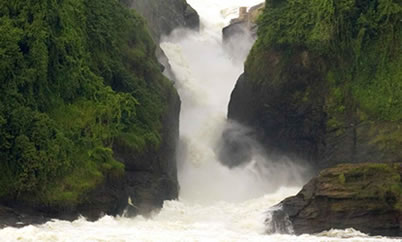 The main attractions of this park are undoubtedly the unique Murchison Falls and the River Nile with its teeming hippo and serried ranks of crocodile on the sandbanks. Read More
The main attractions of this park are undoubtedly the unique Murchison Falls and the River Nile with its teeming hippo and serried ranks of crocodile on the sandbanks. Read More Flora and Fauna
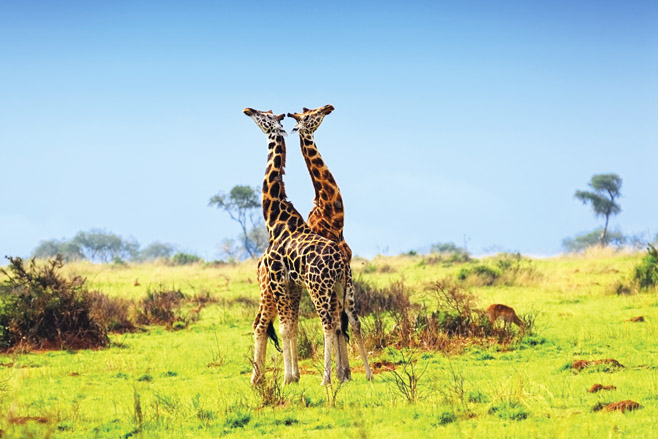 The park is dominated by savanna, woodland, river/wetland and tropical forest habitats which provide homes for 76 mammal species and 450 bird species. Read More
The park is dominated by savanna, woodland, river/wetland and tropical forest habitats which provide homes for 76 mammal species and 450 bird species. Read More River Nile
 The Victoria Nile flows through the park on its way to Lake Albert. This stretch of river provides one of Uganda’s most memorable wildlife spectacles. Read More
The Victoria Nile flows through the park on its way to Lake Albert. This stretch of river provides one of Uganda’s most memorable wildlife spectacles. Read More Things to Do in Murchison Falls National Park
There are so many activities that will make your stay memorable. Among these include bird watching and game viewing. The boat trip around Lake Albert will give an opportunity to see all the different types of bird species more particular shoebill storks. Places such as Rabongo Forest and Budongo Forest are spots for Chimpanzee tracking. Due to the good roads, tourist will enjoy the game drive and this will give you a memorable experience.
Though game Viewing is the big attraction most especially on the upper side of the River Nile, but many other adventures await you in the park including admiring the scenic Murchison Falls, boat rides along the Nile River, hiking to the top of the Falls, chimpanzee tracking in the Budongo Forest and Kaniyo Pabidi, birding and more. The park can be visited any time of the year though most visitors enjoy a safari during the best times to visit the park. There are also scenic drives through the park and camping is also possible and rewarding.
If you feel like being more active, or want to try a new outdoor activity, there are experienced tour guides licensed to work within the park who will ensure that you venture into spectacular park safely.
There are so many ways to discover the park whether you are taking an organized Uganda safari or venturing through the park by car, boat or on foot.
Game Drives
There are several circuits on the north bank of the Victoria Nile River. The best routes for wildlife viewing are the Queen and Albert Nile tracks whivh lie just to the west of the Pakwach Road. The area is known for incredible sightings of giraffes, lions, leopards, hyenas and herds of buffaloes and elephants. Read MoreChimpanzee Tracking
Run by the National Forestry Authority (NFA) Budongo Forest is a great place to see chimpanzees. Chimpanzee visits are cheaper in Murchison Falls National Park when compared with the prices of the kibale Forest and Queen Elizabeth National Park.Sport Fishing
You can try out fishing in the Nile while in Murchison Falls National Park. A fishing permit costs US$50 per day. If you would like to go fishing, you will need a boat and fishing gear that you can rent out from the Red Chilli Rest Camp.Launch Trip
The three hour launch trip from Paraa up the base of the falls is one of the popular things to do in Murchison Falls National Park. It operates at 9AM, 2PM and 3PM. It is possible to ask the guide to let you off the trailhead for the nature walk to the Top of the Falls. You will be picked up by your driver guide from the Top of the Falls.Nature Walk
Run by the National Forestry Authority (NFA) Budongo Forest is a great place to see chimpanzees. Chimpanzee visits are cheaper in Murchison Falls National Park when compared with the prices of the kibale Forest and Queen Elizabeth National Park.Cultural Encounters
You can try out fishing in the Nile while in Murchison Falls National Park. A fishing permit costs US$50 per day. If you would like to go fishing, you will need a boat and fishing gear that you can rent out from the Red Chilli Rest Camp.Murchison Falls National Park
Thinking about taking a wildlife safari in Uganda? Murchison Falls National park has to be the first sought after! This Uganda’s largest national park protects a chunk of untamed African savannah including the most looked for wild animals in Africa. Bisected into two by the mighty river Nile, the park is named after the dramatic Murchison Falls, a point where the world’s longest river explodes violently through a narrow cleft in the Rift Valley escarpment to plunge into a frothing pool 43m below.
The Murchison Falls National Park lies at the northern end of the Albertine Rift Valley, where the bulky Bunyoro escarpment merges into the vast plains of Acholiland. The park is one of Uganda’s oldest conservation areas. It was initially gazetted as a game reserve in 1926 to protect a savanna that Winston Churchill described in 1907 as ‘Kew Gardens and the zoo combined on an unlimited scale’.
Size
The Murchison National Park is the largest national parks in Uganda covering 3840 square Kilometers. It flanks a stretch of over 100km of the Victoria Nile
Visit Murchison Falls Park
Murchison Falls has received many notable foreign visitors. In 1907, Winston Churchill hiked, boated and bicycled up the Nile corridor to the Falls. He was followed by Theodore Roosevelt in 1909 during a hunting safari that cost, by today’s prices, a phenomenal US$1.8m!
Boat Safaris and Aquatic Ecosystems
The stretch of the Nile flowing through Murchison Falls National Park provides exceptional wildlife viewing opportunities. Boat safaris along the river allow for close-range observation of elephants, hippos, and bird species that frequent the shoreline. The delta, where the Nile enters Lake Albert, is a particularly important habitat. It serves as a feeding ground for fish and a prime location for sightings of the shoebill, a rare and highly specialised wetland bird.
Birdlife and Wetland Importance
With over 450 recorded bird species, Murchison Falls National Park is critical for avian research and conservation. The park’s diverse environments, including riverine habitats, papyrus swamps, and savannah grasslands, each support distinct bird populations. African fish eagles, ground hornbills, and saddle-billed storks are commonly observed, while the wetlands attract migratory species that depend on seasonal water fluctuations.
Places to Visit in Murchison Falls National Park
Murchison Falls
Murchison Falls is characterized by eternal war between rock and water. The waters violently compress through a narrow gorge, spraying misty droplets along their wake over a 50m radius. This creates a permanent rainbow over the battlefield and causes a continuous roar. From Baker Point on the southern side, you can also view the Nile splitting into the smaller Uhuru Falls, created in 1962 when the river burst its banks.
River Nile
A boat ride along the Nile to the foot of Murchison Falls is a rewarding experience for nature lovers, as the northern bank teems with a variety of mammals, birds and reptiles. Guided nature walks along both the north and south banks are another refreshing activity, and sport fishing is also possible here. Rafting will be available starting in 2012.
Nile-Lake Albert Delta
This wide, calm stretch of water, where the tranquil Victoria Nile flows into Lake Albert, is a key area for bird watchers. Its papyrus-lined banks are bursting with birdlife, including Goliath Herons, Great Egrets, and African Fish Eagles. The most sought-after species here is the rare Shoebill.
Buligi Game Tracks
The Buligi game tracks, stretching between the Victoria and Albert Niles, are the Murchison Falls National Park’s most popular safari destination. At around 120-170km in length, they pass through open savannah grassland, woodland, acacia and riverine vegetation. Most of the park’s game can be viewed here, especially during early morning and early evening tours.
Paraa
Paraa, meaning home of the hippo in the local Luo language, is the park’s tourism hub. All the park’s access roads converge here as the northern and southern banks are linked by a passenger ferry, and several accommodations are located nearby. Additionally, a museum and gift shop can be found on the north bank, and most game drives, launch trips and nature walks commence here.
Karuma Falls
The Karuma Falls are located in Chobe, in the northeastern sector of the park. These roaring waterfalls on the Victoria Nile are made up of a series of natural rock formations which cause the waters to ripple and give them a white, foamy appearance. It is an ideal area for sport fishing.
Kaniyo Pabidi Forest
In the south of Murchison Falls Conservation Area, this forest ecosystem contains black-and-white colobus and blue monkeys, olive baboons, and a habituated chimp group which can be tracked. Elephants, buffalos, lions and leopards are also frequent visitors. Many forest birds can be viewed here, including the chocolate-backed kingfisher, white-thighed hornbill and Puvel’s illadopsis which is found nowhere else in East Africa. Kaniyo Pabidi has a campsite, cottage accommodation, forest walks and excellent bird watching.
Rabongo Forest
Surrounded by savanna and covering just 4km2, Rabongo Forest is considered a birders’ paradise because of the endangered species found here. Rabongo is ideal for educational tours as it provides opportunities to identify animals, birds, medicinal plants and trees. For relaxation, visitors can camp and enjoy picnics by the Wairingo River.
Wildlife in Murchison Falls National Park
Murchison Falls National Park is a home to a wide range of flora and fauna. Most popular animals in the park include African elephants, lions, leopards, buffaloes, Nile crocodiles, hippos, waterbucks, warthogs, Uganda Kobs, hartebeests, Rothschild giraffes, Murchison waterfalls, primates such as olive baboons, blue monkeys, red tailed monkeys, chimpanzees that make up a total of about 800 and dwell within Kaniyo Pabidi and Budongo forests, black and white colobus monkeys a mention but a few as well as several birds including shoebill stork, grey crowned cranes, blue headed coucal, swamp flycatcher, squacco heron, black billed barbet, silver bird, red throated bee-eater, giant and malachite kingfishers, eastern grey plantain eater, piapiac, weaver birds, white browed sparrow weaver, speckle fronted weaver, African quail finch, Denham’s bustard among others.
Wildlife Populations in the Park
Wildlife populations have largely recovered from the poaching of the 1980s; in the lush borassus grassland to the north of the Nile, elephant, buffalo, giraffe and a variety of antelope are regularly encountered on game drives, while lion are seen with increasing frequency.
In the southeast, Rabongo Forest is home to chimps and other rain forest creatures.
The Nile itself hosts one of Africa’s densest hippo and crocodile populations, and a dazzling variety of waterbirds including the world’s most accessible wild population of the rare shoebill stork.
Wildlife and Predatory Dynamics
Murchison Falls National Park supports a dense population of large herbivores, including elephants, buffalo, giraffes, and Uganda kob. These species form the foundation of the park’s predator-prey dynamics, sustaining populations of lions, leopards, and spotted hyenas. The riverbanks provide an essential habitat for Nile crocodiles and one of Africa’s largest concentrations of hippos, reinforcing the park’s ecological complexity.
Travel Planner
Planning a safari in Murchison Falls National Park requires getting informed so that you can make insightful decisions. Now let’s get started with planning a safari in Murchison Falls National Park so that once you step foot in the park you can enjoy a smooth trouble free safari.
Get informed on
- The best things to do in Murchison Falls Conservation Area.
- Must See Things in Murchison Falls National Park,
- When to go – What are the best times to visit the park
- Safaris & Tours – What kind of safari to take – Camping Safaris, Wildlife Safaris, Fishing Safaris, Bird Watching Trips etc
- Accommodation – Where to stay while on a safari – Budget Safari Lodges, Mid Range Lodges, Luxury Safari Lodges – Accommodation within the park and Accommodation outside the Park
- Getting There – How to get to Murchison Falls National Park – Guided Safaris Vs Independent / Self Drive Tours
Location & How to Get There
This is located at the northern end of the Albertine Rift Valley, bisected by the Mighty Victoria Nile, that flows from the west of the park and pours into Lake Albert on the East of the park.
Getting There
There are many ways to get the Murchison Falls National Park.
By Air: You can catch a flight to Pakuba Airstrip with Aero Link or Bar Aviation.
The Park can be reached by air charter services. There are airstrips at Paraa and Rabongo which can accommodate light aircraft of up to six seats capacity.
By Road: You can also reach the park by road.
By road, it is a 3 hour drive from Kampala to Masindi, 217 km on tarmac and 40 km on high grade murram, then an additional 2 hours (97 km) from Masindi to the Falls on murram. A 4 wheel drive vehicle is advisable as the Masindi-Paraa road is rough.
Gates to Murchison Falls National Park
There are also multiple entrances to access the park
Plan Ahead Popular gates are Kichumbanyobo Gateand Mubako Gate in the south of MFNP, Wankwar Gate, Tangi Gate in the North, and Chobe Gate.
Park Fees
Entrance fees to Murchison Falls National Park costs US$45 for International Travelers. Entrance Fees must be paid at the entrance gates via Mobile Money or Credit Card Payment.
Organized Tours
There are organised fly-in and overland tours to Murchison Falls National Park. These trips are offered by local tour operators listed on this website. From as low as US$400 you can book a budget group safari from Kampala.
Self Drive
Several travelers opt for self guided tours to Murchison Falls National Park. You can obtain a rental car from Car Rental Uganda and get to explore the park on your own.
When is the Best Time to Visit Murchison Falls Park?
The park can be visited all year round. However the trend for African safari goers affects the park. You will find more travelers visiting the park during the months of June to October as well as December to March.
Murchison Falls National Park is often included in safari circuits that include visits to leading Uganda parks. It is often combined with other popular adventure activities that include gorilla safaris in Bwindi and Mgahinga, chimpanzee tracking in Kibale Forest, wildlife safaris in Kidepo and Queen Elizabeth National Park. Given that most visitors to Uganda go gorilla trekking in Bwindi Impenetrable Forest and Mgahinga Park, Murchison Falls Park receives the highest number of visitors in June to September and December to March.
Going on Safari in Murchison Falls National Park during the dry season makes animal viewing easier if compared with the rainy months. It is wise to plan your safari well so that you can see all the animals on your wishlist.
Start planning your next Uganda safari today with our free trip planning information and get up to date travel information, news & safari deals from our preferred travel partners.
Where to stay
Accommodation ranges from campsites, lodges, hotels and guesthouse. Some of these are built on top of the falls. They have better facilities that are eco-friendly. Budget accommodation is also available for the budget travelers and the most suitable places include Kaniyo Pabidi Camp and Red Chilli Rest Camp. Tourists that love up market accommodation include Nile safari camp, Paraa safari lodges as well as Sambiya River.
In case you want to stop in Masindi, there is luxury accommodation such as Masindi Hotel along with Court view hotels that have excellent services, Budongo Eco Lodge, Fort Murchison , Ziwa Rhino Sanctuary, Nile Safari Lodge, Chobe Safari Lodge. Bwana Tembo Safari Camp , Murchison River Lodge , Fort Murchison, Murchison River Lodge, Global Village Guest House.

A Road Trip to Murchison Falls National Park

5 Reasons to Track Chimpanzees in Budongo Forest

Minister Visits Murchison Falls to Resolve Human Wildlife Conflicts

Private Boat Ride to the Delta Area in Murchison Falls National Park
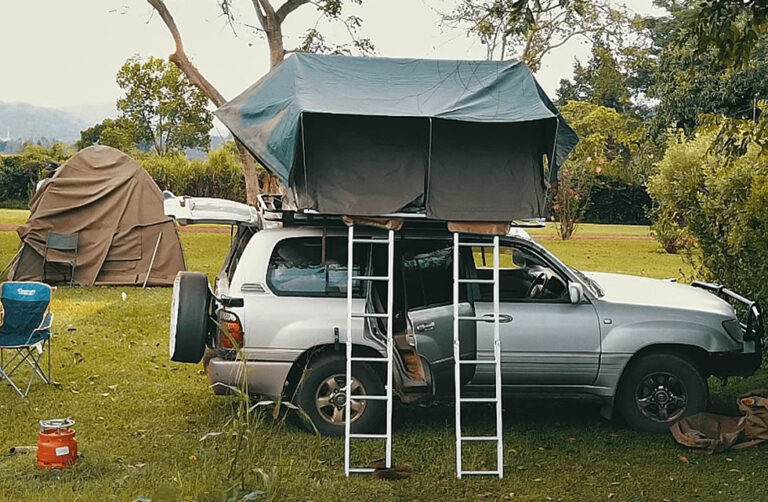
What to Do When Stuck in the Middle of Game Park
